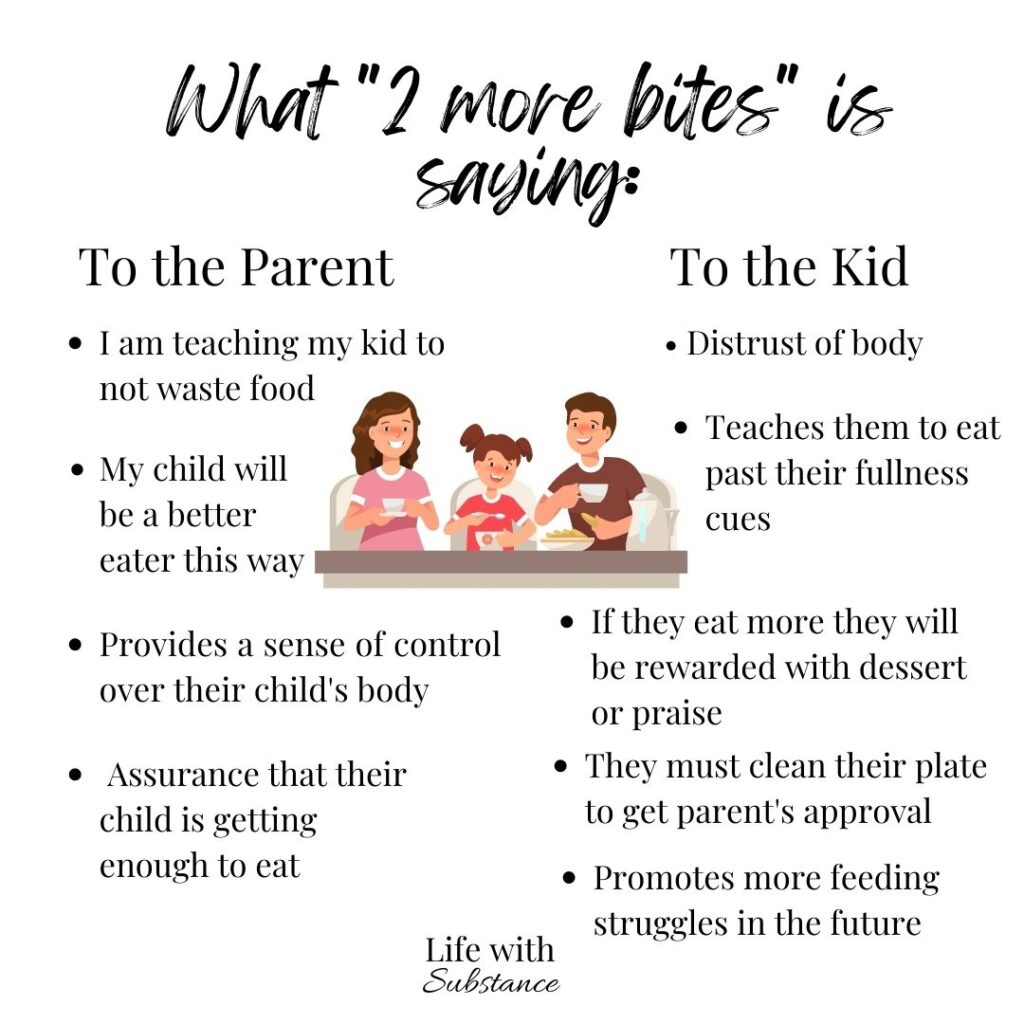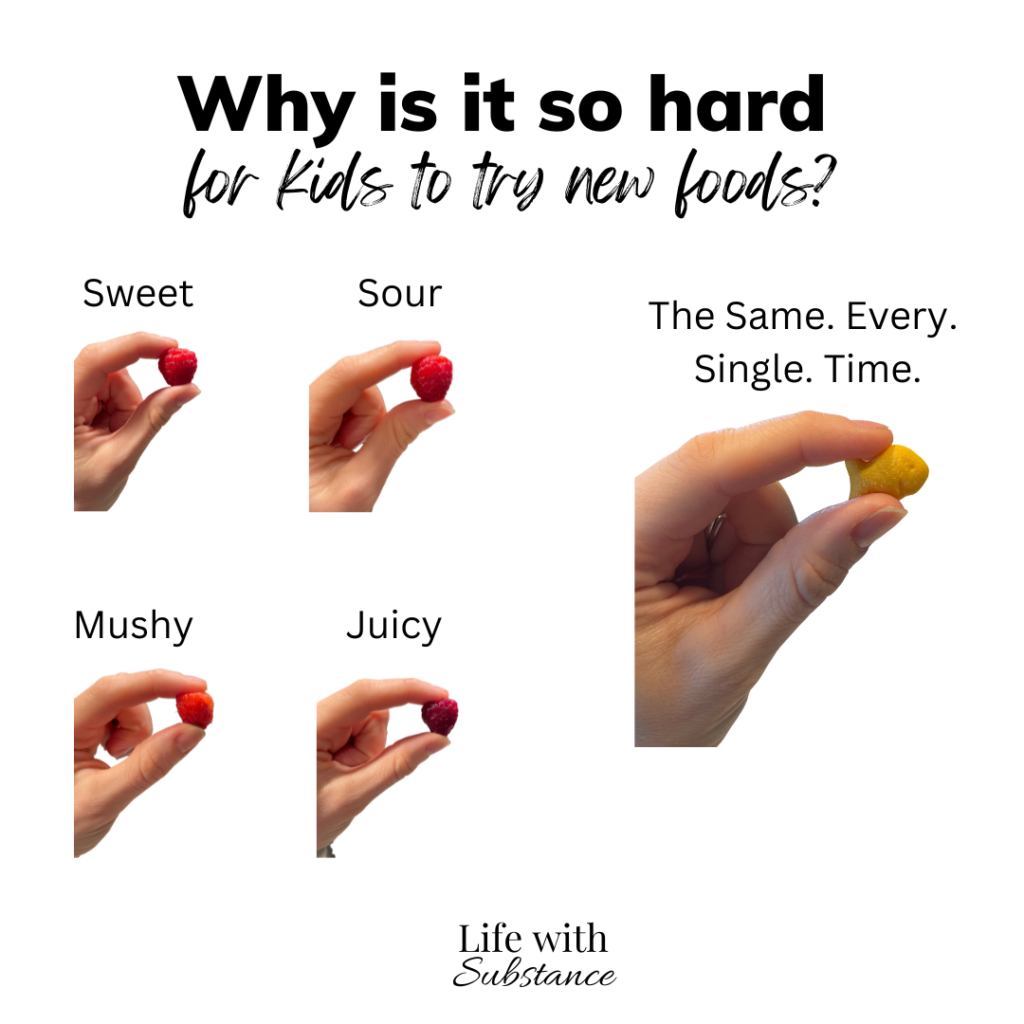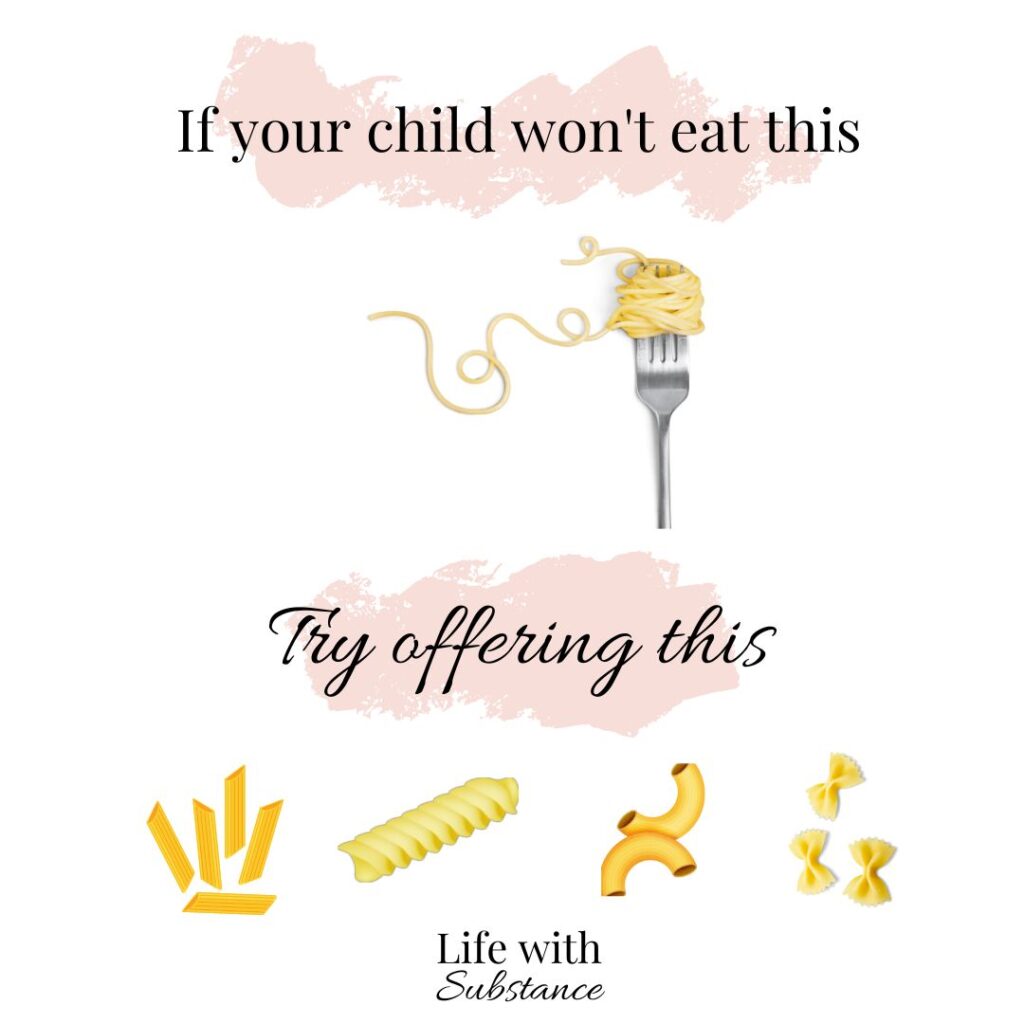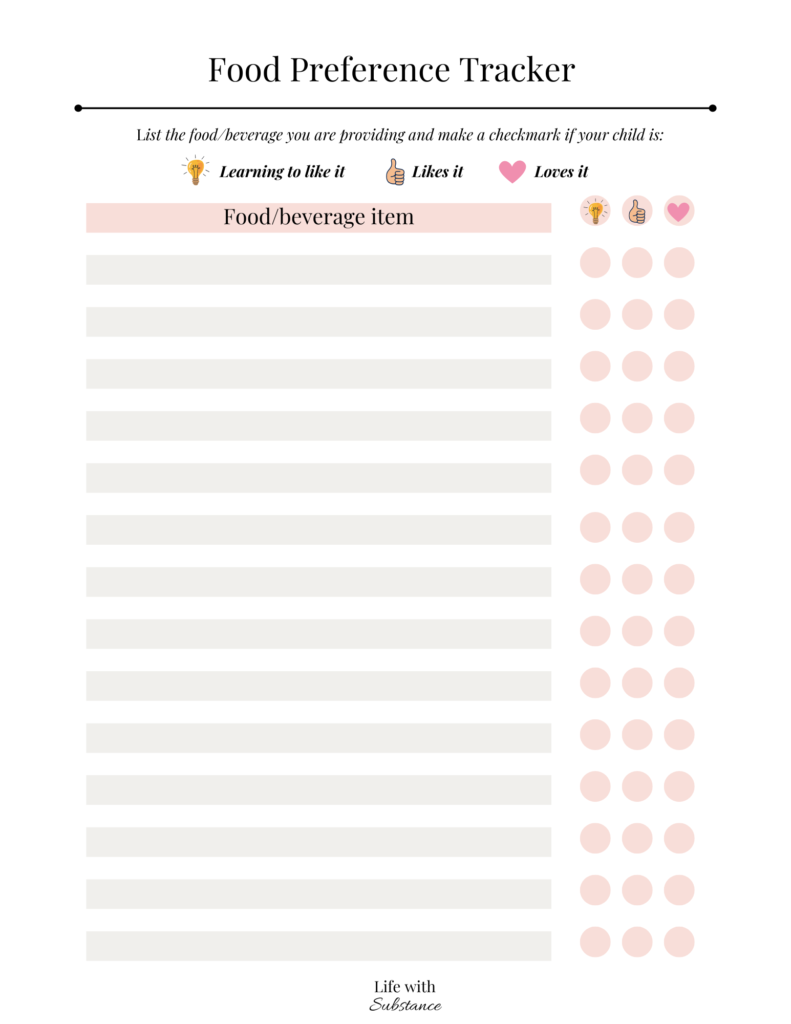This post may contain affiliate links. If you shop from one of our links, we may earn a commission.
Imagine this…you prepare a home-cooked meal and you call your kids to come sit down for supper. Everyone serves themselves, no one complains about what is offered, and your kids try all the items without prompting. No one begs for their safe foods or throws a tantrum about the meal. Sound too good to be true? Do you feel like your child only has a handful of items they will eat, meal times are a battle, and everyone leaves the table frustrated? I can help!
Over the years I have learned that sometimes we can take all the right steps and read all the books, but at the end of the day, our children have their own preferences. My son has always been the more adventurous eater, and my youngest is still quite particular. Food was offered the same way to all of my kids, however, they are each unique in food intake.
Just because you have a fussy eater does not mean that you have failed as a parent in your feeding responsibilities. As kids transition from infants to toddlers, they explore new tastes, textures, and smells. This can be a lot to take in and safe foods help bring them comfort and familiarity.
What are safe foods?
Have you heard the term “safe food” before? Safe foods are essentially items that your child enjoys and will happily eat. I’m going to let you in on a little secret. Knowing your child’s safe foods is CRUCIAL if you have a picky eater. Why? Let me explain.
If you call your child to come to eat supper and they sit down at a table full of foods that they haven’t learned to like yet, they are likely going to…
A) Throw a tantrum
B) Beg for something else to eat
C) Walk away from the table hungry, only to request a snack shortly after you get the meal all cleaned up
But let’s just envision this…you prepare the same meal as above, but this time you include a safe food such as bread and butter. Instead of having the above reactions, your child is much more likely to approach the dinner table feeling respected and confident that there is something on the table they can enjoy. Now don’t get me wrong, your child may still request other items at which point you can kindly remind them that they are having xyz for supper and they can have their request another day.




How to identify your child’s safe foods
While it may feel like your child only eats a handful of specific foods, they likely enjoy more foods than you think. For example, if your child enjoys fresh fruit, that opens up several options as a safe food. You can serve apple slices, grapes, orange slices, kiwi, etc. Keep in mind, that safe foods aren’t necessarily favorite foods. They are foods they will consume if offered at a meal as an option. A lot of times safe foods tend to be more bland foods. I created a chart to help you identify what foods your child loves, likes, and is learning to like. A “learning to like it” food wouldn’t necessarily be considered a safe food, however, it doesn’t mean that it may not eventually become one.
Remember that if your child pushes away a food, or even spits it out, it doesn’t mean that they will forever dislike that particular item. It can take 15+ exposures to a food for a child to truly know whether or not they like that food. An exposure can simply be having them allow the food to sit on their plate, touch it to their lips, or even lick it. For more help on how to provide exposure, grab my free picky eating guide.
Use this chart to help you create a list of foods your child is enjoying versus which ones they need more exposure to. This will help you better identify what foods your child feels comfortable eating. Once you have a list of safe food options you can use these to help decrease mealtime stress.
How to offer safe foods
Safe foods really are a game changer for helping to alleviate the power struggle at meals for finicky kids. I utilize safe foods at pretty much every meal. Why? Because each of my kids has their own food preferences and I’m not about to become a short-order cook for family meals. Kids generally have similar safe foods so you don’t need a whole buffet to meet everyone’s needs.
I prepare a main entree (I try to vary this each week to encourage my kids to try new foods) and the sides are 1-2 safe foods that I know my kids will eat. Because my kids are younger and I don’t want to spend my entire night in the kitchen, I keep my side options simple. For example, it may be as simple as supplementing the meal with cottage cheese, fruit, or yogurt because I know those are safe foods for my kids.
What happens when your child only wants safe foods?
Safe foods will cause way fewer tears at mealtimes, however, let’s talk about what happens with your child uses their safe foods as a crutch and only wants that. The first thing we need to address is your feeding style.
The Satter Division or Responsibility (sDOR) is an evidence-based approach to feeding that provides guidelines to equip and empower parents and kids around mealtimes. It helps kids to develop trust around food and learn to recognize their own hunger and fullness cues. This method was developed by a registered dietitian and feeding expert Ellyn Satter and has been proven to be a highly effective system to bring peace to meal times.
The best way to explain the sDOR feeding style in a nutshell:
Parent’s role: Parents determine what the family is eating, when they are eating, and where.
Child’s role: The child is responsible for determining whether they want to eat what is provided and how much they want to eat.
You can learn more about how to implement this feeding style here.
Starting the Division of Responsibility
If you currently don’t follow the sDOR at home, I highly recommend starting as soon as possible. You will quickly find this feeding style can help reduce picky eating and promote a healthy relationship with food. If your child only wants safe foods you will need to first start working on the sDOR before you can focus on transitioning their safe foods.
I know you may feel anxious, hesitant, or even fearful about starting a new feeding style. You may even just be drained from so many other parenting responsibilities that starting something new feels overwhelming. But I promise you that once you transition, your role in feeding your kids will get so much easier. And your children will also reap the benefits. The good news is that it is very simple to implement and doesn’t involve any extra time to start. Because time is precious, am I right?
When starting the sDOR you may notice that your child will only eat one or two safe foods for a few days to possibly even a few months. This is totally normal, just trust the process.

Refusal of safe foods
Once you feel like you are at a point where you feel confident with the sDOR, you can begin to help transition your child away from safe foods. Kids can use their safe foods as a crutch to avoid eating other foods at the table. However, sometimes as parents, we also can rely too heavily on safe foods.
Maybe you’re in a season of life where it just feels easier to put out the same few staple items because you know they will eat it and it satisfies the rest of the family. And don’t get me wrong, I do that too. Because there are just times in life when trying to come up with new meal items takes up too much mental space. And while we have those seasons of life, eventually we need to help our kids transition to help them include a larger range of foods.
Your child may even start to flat-out refuse their favorite foods leaving you to find new options they will accept. As parents of picky eaters, we tend to be overly aware of what foods our kids will eat or not. If they refuse their favorite chicken nuggets one day, that doesn’t necessarily mean they no longer will eat them. Maybe they weren’t hungry when offered it or maybe they filled up on other favorite items at the meal. If you offer it again and they still refuse the item, they may be burnt out from that food.

Top tips for expanding their safe foods
Here are my top tips for helping your child expand their list of safe foods.
#1 Food chaining
Food chaining is the process of helping your child transition from their favorite foods slowly and in a way that doesn’t overwhelm them. You take a food your child loves and VERY GRADUALLY offer foods with a similar taste, texture, and smell. This is particularly helpful if you have a child with a sensory issue. If your child accepts a very similar food, it counts as a “link” on the food chain. From there you can continue to offer small transitions to help them expand their diet.
Many examples of food chaining online seem to take a more drastic approach. For example, going from a french fry to mashed potatoes is not going to be effective for picky eaters. Here is an easier transition for kids. If your child loves french fries only from Chick-Fil-A, start by buying frozen french fries from the store that look and taste very similar. After they have accepted that you can try other frozen french fries in a different shape. Once they feel comfortable with this you can try making homemade fries.
Bread is another favorite for many kids. If you are trying to transition them from only eating the same type of bread, start by offering another type of bread that is very similar. For example, if you always purchase wheat, try offering white bread to start. Once you mastered that, you can try cutting them into different shapes. Using a cookie cutter is a fun way to serve food in various shapes. You can begin to try different spreads such as peanut butter, jelly, or cream cheese or allow them to dip in tomato soup or other sauces. Eventually, you can slowly transition to items like pitas, tortillas, naan bread, crackers, and more.
While we would love to speed up the process of our kids trying new foods, it just takes time. Oftentimes it takes longer than we would like for them to accept a wide variety of foods. For some foods, it has taken my kids years to even accept. Just stay the course.

#2 Alternate safe foods
If your child loves cottage cheese and you offer that at every meal for their safe food, they begin to expect it each time they sit down. They start to use that safe food as a crutch and have a more difficult time expanding their food options. Plus, they likely aren’t getting a variety of nutrients in their diet as they would if you rotated through their safe foods.
Go back to your “love it, like it, learning to like it” list to review which foods your child will accept. Create a rotation of those safe foods. While they may have a list of 15 safe foods, that doesn’t mean you have to rotate through all 15 at once. Choose 3-4 safe foods each week to rotate through on different days to help prevent dependency on the same food and better meet their nutrient needs.
However, if you have leftovers you can still offer them the next day. It’s okay to serve those back-to-back.
Allowing your kids to choose which safe food they want can also help them feel respected and more open to eating at the meal. Next time ask if they would rather have: apple slices or cottage cheese, yogurt or carrots, a dinner roll or noodles, as a few examples.
#3 Make gradual changes
One thing I have noticed with my kids is that they can become dependent on the packaging of products to determine whether or not they like the item. For example, my kids love a specific type of chocolate chip granola bar. The first time I took the granola bar out of the package and offered it to my 3-year-old on a plate, she flat-out refused it. I realized then that she would only take it if she saw the package to know it was safe.
Now every once in a while I take those safe foods and alternate how it is offered. Occasionally I will remove products from packages, cut them up (if it’s an option), or serve them in different containers. This helps kids to rely more on their senses to determine whether or not they like the food rather than on the package.
Other small changes include:
– Serving foods or beverages in various cups, bowls, plates, or containers
– Change the location you eat: have an outdoor picnic, sit at the counter versus the table, alternate chairs at the table (if they always choose the same seat)
– Peel the fruit on occasion
– Serve fruit and vegetables in various ways – raw, canned, frozen, juice
#4 Ask your kids to help in the kitchen
Did you know that having your kids help prepare foods they are learning to like actually counts as an exposure? While they may not be touching the food to their lips or even chewing the item, it still helps them to increase their comfort level of being around the food. This also helps them feel more comfortable with allowing the item on their plate. Plus, it’s a great way to help them work on their fine motor skills.
This can also help when trying to transition their safe foods. Ask your child to help cut the safe food into different shapes using cookie cutters or put a different kind of spread on their bread. Just make sure it’s at your child’s level so they don’t get frustrated and not want to help.
You might be surprised how much more willing kids are to eat the items when they can help with preparing them. I used to think my kids didn’t like tacos. But when I had them choose their own toppings and assemble their tacos they suddenly loved eating them. Now my kids request tacos once a week. Who knew such a small transition would make such a big difference in their eating?
Taking your child shopping at the grocery store is just one more way to help your child increase their interest in eating. Ask them to pick out a new food from the store together that you can prepare together at home.

Extreme Picky Eating
I don’t want to dismiss food refusal and extreme picky eating, because these are also very real issues. If you tried filling out the “love it, like it, learning to like it” food chart and still aren’t able to identify more than a handful of items that your child likes, these are red flags and you may want to seek professional help from a feeding therapist. If you have an older child who has very limited foods they will accept, you may also seek guidance if you suspect an eating disorder or restrictive food intake disorder. You can seek guidance on this from your child’s pediatrician.
In Summary
If your child is showing picky eating behaviors and you are struggling to move past a select amount of foods, your child may be using their safe foods as a crutch. The good news is you can still break your child’s habits and help them expand their food choices through small changes, food chaining, alternating foods, and asking your child to help in the kitchen. The goal is to prevent meal times from being a negative experience for family members. The sDOR feeding method empowers both the child and parents around meals and snack time. As parents, we too can be good role models at the table to encourage our kids.



